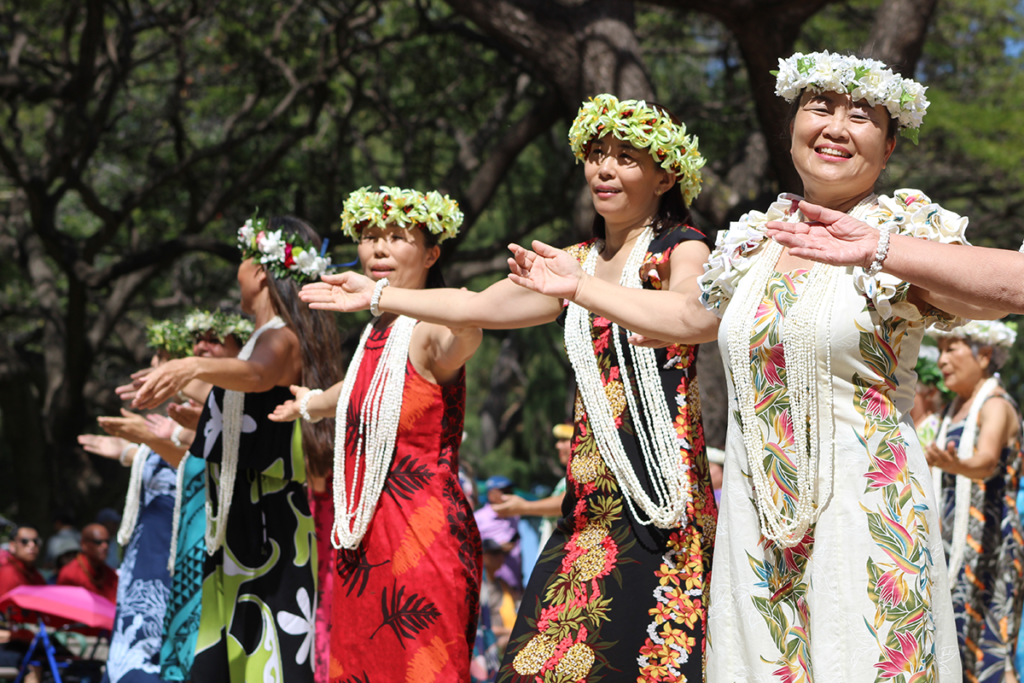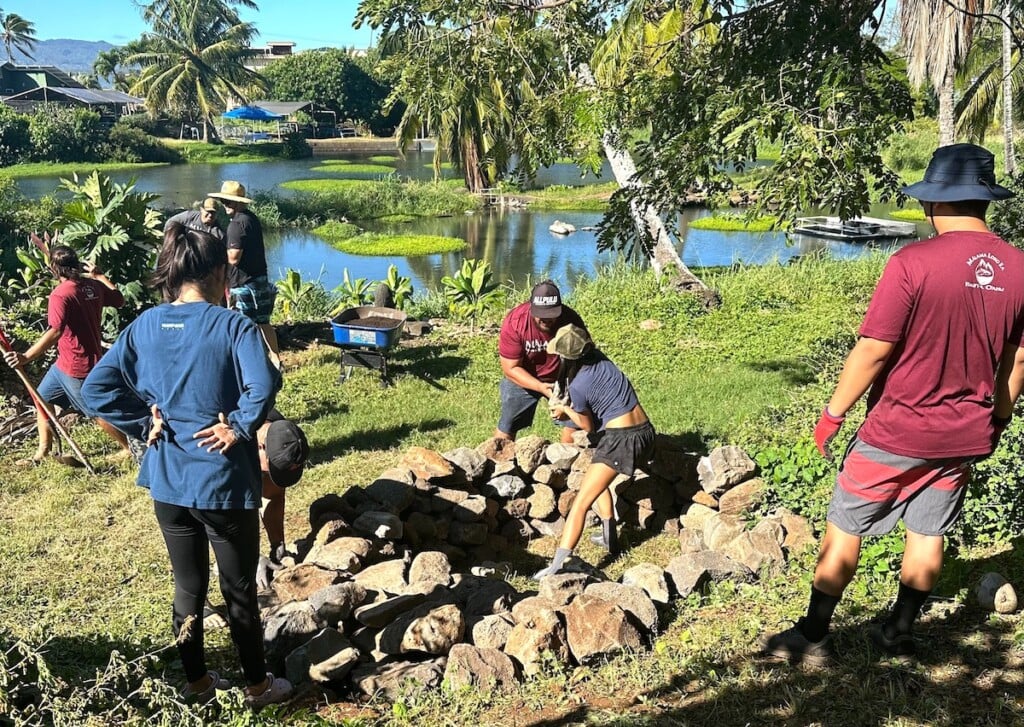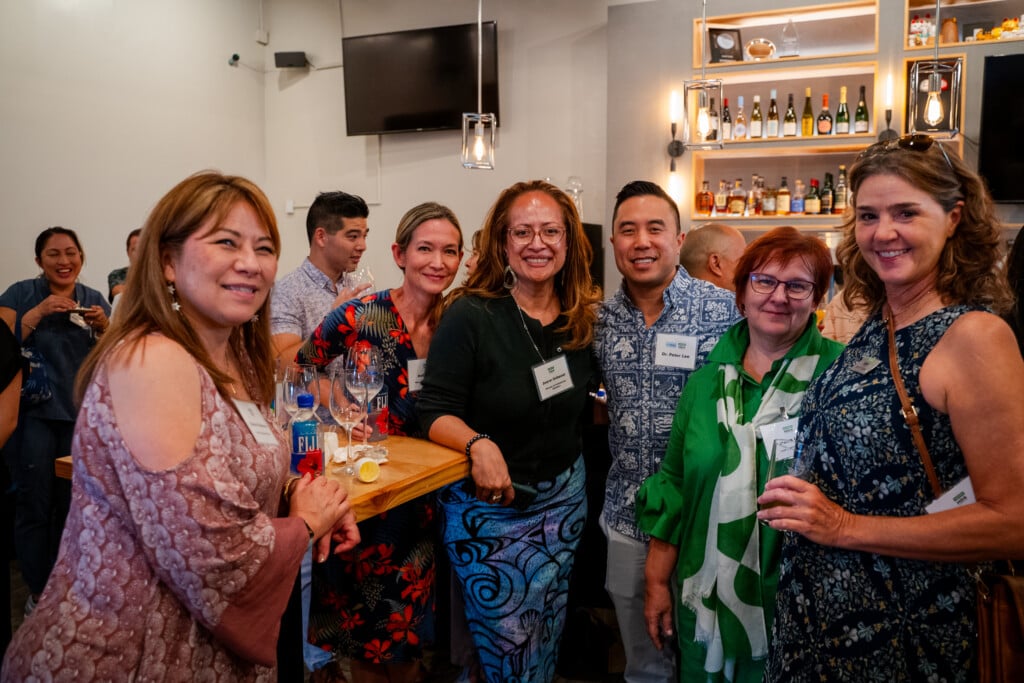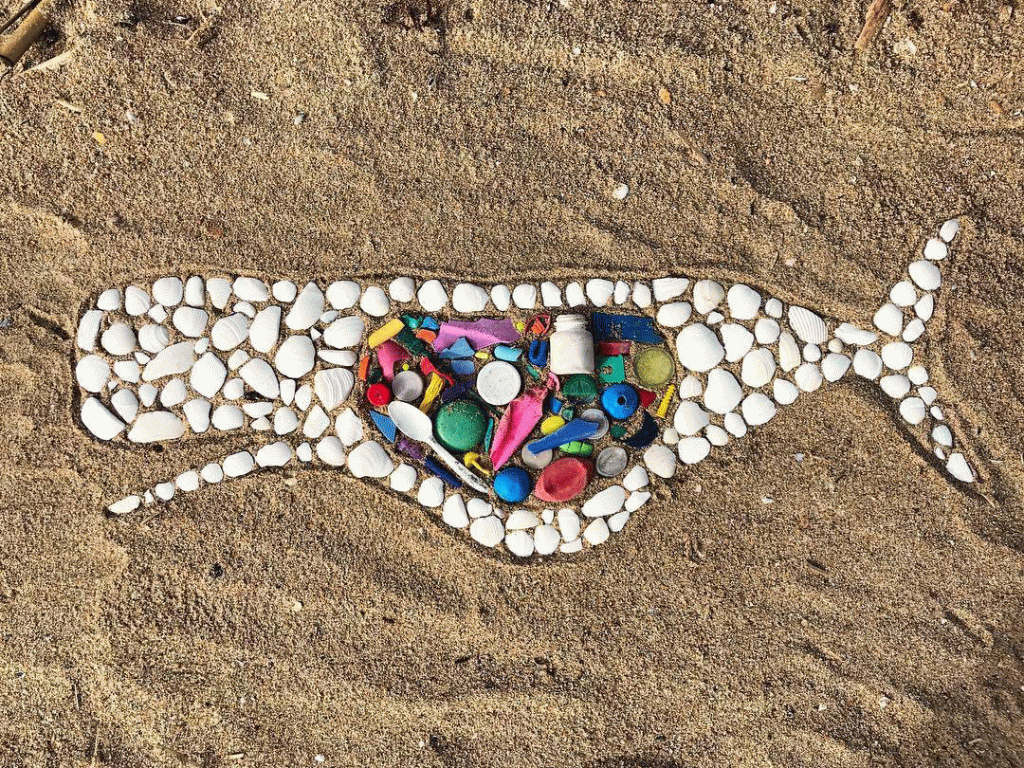Hawaii Soldiers Coming Home
For many soldiers getting back from Iraq or Afghanistan, the battle has just begun.
|
Josh Finn was 18 when he joined the Army in 2002. Born and raised in Lahaina, Maui, he dreamed of becoming an international businessman and learning Japanese. The military offered money for a college degree and Finn was eager for adventure and to see the world. See the world he did; Finn shipped out with the 82nd Airborne Division, serving three tours of duty as an infantryman by the time he was 24, two in Iraq, one in Afghanistan. He spent his time in the thick of the action, providing convoy security, manning checkpoints and participating in counter-insurgency operations such as cordon-and-search raids.
“We would knock on doors and look for specific people,” he says. “Sometimes we cleared whole sections of villages and would go house to house looking for weapons and contraband items.” Finn served well; by his last tour of duty, he had been promoted to squad leader.
After his six years were up, Finn returned to Hawaii to carry out his original goals. He enrolled in business and Japanese classes at Kapiolani Community College, but things didn’t go according to plan. In the months he was back, he developed anger and anxiety issues, started waking up in the middle of the night kicking and screaming, and began abusing alcohol and marijuana in an effort to keep it together. “I was a different person,” he says. “I was doing really poorly in school. I couldn’t concentrate, couldn’t focus. I was losing my mind, basically. Just couldn’t keep up.”
The experiences on which he had hoped to build his future were instead derailing his life.
Finn isn’t the only one coping with issues stemming from an overseas deployment. To date, Hawaii has sent tens of thousands of soldiers, sailors and airmen to the conflicts in Iraq and Afghanistan—almost 5,000 National Guard members alone—and the deployments continue. Many of them are now coming back, but their experiences are coming back with them, and causing problems ranging from domestic and marital conflicts, to financial breakdowns and psychological disorders.
The woes are similar, if not identical, to the ones that began afflicting veterans of the Vietnam War 40 years ago. This time around, the U.S. government has recognized the problem, and has poured hundreds of millions of dollars into helping this decade’s new crop of enlisted personnel and veterans. The National Guard, for example, created the Yellow Ribbon program in 2008, to screen National Guard soldiers and their families for potential issues, not only before and during deployments, but 30, 60 and 90 days after soldiers return from deployments.
|
But despite all the attention being paid, and all the programs available from both the Department of Defense and the Department of Veterans Affairs, many veterans aren’t getting the help to which they’re entitled, leaving private organizations and the court systems to step in.
There are a number of factors that keep men and women who have been traumatized in wartime situations from seeking the help they need. For one, there still exists a macho, “I can handle it myself” culture within the military, despite efforts to create a kinder, gentler armed force.
Finn says the post-deployment debriefings he attended in 2008 didn’t do much good, partially because he didn’t think he needed help at the time. “They give a lot of those safety briefings, but it’s kind of told in a half-joking manner, and it was really up to the soldiers to step forward for help,” he says. “Most of the soldiers, myself included, were in denial about how much we were affected. From my own experience, soldiers that sought out help were definitely ostracized, even if the official Army policy says, don’t look at them differently. So you try to hide it.”
Also, someone suffering from the psychological effects of war is often less equipped to seek the help they need. First Circuit Court Judge Ed Kubo says he regularly sees veterans and military personnel in his courtroom who aren’t getting the treatment and assistance they need, because they don’t know how. “People are falling through the cracks,” he says. “They don’t have the wherewithal to complete even a simple form, if they are suffering from PTSD (post-traumatic stress disorder). I don’t use this term in a derogatory way, but sometimes when someone has PTSD, you need to hold their hands and guide them through the process of climbing out of this hole.”
Find out how to donate to veteran's charities, here. |
Indeed, the highest profile complication of serving in Iraq or Afghanistan—and often the cause of the other problems faced by veterans—has been PTSD. Ken Hirsch, director of the Department of Veterans Affairs’ Traumatic Stress Disorders Program at Tripler Army Medical Center, says that 18 percent of soldiers returning from Iraq and Afghanistan are being diagnosed with the disorder, a rate he expects to rise to 30 percent. “The effect of repeated tours of duty is devastating,” he says.
The term PTSD was only formally recognized in 1980, but it’s far from a new phenomenon. The cluster of symptoms, which includes flashbacks, nightmares, difficulty sleeping, anger and hypervigilance, was called battle fatigue in World War II, and shell shock in World War I. Veterans of the Civil War were said to have something called Soldier’s Heart, and references to PTSD-like symptoms can even be found in the works of Shakespeare and Homer.
|
It’s always been a tenacious and hard-to-treat disorder, but, in recent years, a number of new therapies have been empirically shown to alleviate symptoms. There’s no 100 percent effective cure yet, but, whereas doctors in the past were forced to guess at the effectiveness of counseling and medication, today, treatments with names like “Seeking Safety” and “Acceptance and Commitment Therapy” come with research studies showing statistically significant results.
Hirsh’s program, an intensive nine-week residential clinic designed for soldiers and veterans suffering from severe PTSD, uses several of these evidence-based treatments, including “Desensitization in Vivo.” Patients take group outings to experience situations that might trigger their anxieties: movie theaters, driving on the freeway, a visit to Ala Moana Center.
They also spend hours every day in group psychotherapy sessions, unwrapping the paranoias and fears that keep them from functioning normally. “You can’t just change your emotions by wanting them to change,” Hirsh says. “But you can modify your thought processes, by evaluating their validity. And that can change your emotions.”
Not everyone needs a rigorous program like this. Hirsch says PTSD occurs in a wide range of severity. “It’s more like hypertension in that respect, rather than pregnancy, where you either are or are not,” he says. Patients with milder symptoms can be treated on an outpatient basis.
But, realistically speaking, the limiting factor is space, not need. The current ward has room for just 12 patients at a time, and there’s a constant waiting list of veterans and active-duty soldiers hoping to get treated. The overflow is forced to find help elsewhere.
Finn was one of the ones who couldn’t get into the residential PTSD program at Tripler. He remembers asking his VA psychiatrist to be referred, as his anxiety attacks and nightmares grew worse, but got the thumbs down. “He said, You’re not bad enough. We’re reserving that for the extreme cases. So what do I do in the meantime?”
The answer for Finn, and for many other veterans not finding the help they’re looking for, has been to turn to independent organizations in the community.
The outpatient therapy programs at Tripler Hospital for substance abuse and PTSD did Finn some good, but more helpful, he says, were the counseling sessions at the Honolulu Vet Center. “The approach is basically to talk it out, expel the demons, express your feelings. It worked for me for quite a while. But when I stopped, the symptoms started coming back.”
Things came to a head in June when he was arrested for a suspected DUI and for resisting arrest. The DUI charge was dismissed, but Finn lost his pool attendant job at the Moana Surfrider, and says his life started spinning out of control.
The turning point came this past October when, after the loss of his place forced Finn to live out of his car for four days, he moved into a shelter at Barbers Point, run by nonprofit organization U.S. Vets. The shelter is a residential work reentry program devoted to helping veterans transition into normal civilian life.
“People were telling me about U.S. Vets and how it helped them, and it sounded really appealing,” Finn says. “A free place to stay, three meals a day, regular sleeping times, that comfortable military setting, at least parts of it. It’s given me a stable platform, and peace of mind.”
At the moment, the majority of the veterans living at the shelter fought in the Vietnam War, but U.S. Vets outreach counselor Marko Johnson says he’s starting to see more and more Iraq and Afghanistan veterans out on the streets. The difficult task facing U.S. Vets and other independent veterans nonprofits in Hawaii today is publicizing their existence to this new wave of veterans.
Noe Foster, founder of theStrategist, a local health care advisory firm, and consultant to Mental Health America of Hawaii, says, “What we’re learning is that younger veterans aren’t raising their hands and identifying themselves as veterans. For the soldiers coming back from Iraq and Afghanistan, I think the term ‘veteran’ is more associated with Korea or Vietnam.”
The challenge is even bigger when it comes to female veterans, who, as Foster points out, experience a disproportionate amount of ill effect from wartime service. “The VA estimates one in three women who have been deployed to combat since 9/11 have experienced sexual trauma or rape, and 90 percent of these incidents go unreported,” she says.
Women are three times more likely than men to get a divorce while they’re deployed, Foster adds, which leads to child custody issues, financial hardships and other complications. “Many of these issues are common to men as well, but we’re finding that women, in particular, are not navigating the processes and programs that are already available to them. There’s a wealth of resources available to veterans returning home, but the women are often going it alone.”
|
In addition to a fact-finding program called Healing the Trauma of War, Mental Health America of Hawaii recently launched a program aimed specifically at helping homeless women veterans. Funded by a $300,000 federal grant, POWER Up! works with veterans to develop individualized plans to get them employed, housed and healthy. Foster says POWER Up!, which started July 1, hopes to enroll 90 veterans within a year. As of the beginning of November, it had eight.
If the safety nets provided by the VA and nonprofit organizations don’t catch veterans in trouble, the last, most tragic, catchall is the court system. Finn’s brush with the law came out of a traffic violation, but other Iraq and Afghanistan veterans have been getting into more serious trouble. Sometimes it happens in spectacular fashion: In August, Clayborne Conley, a former Hawaii National Guardsman who had returned from an Iraq deployment in 2005 and later attended Tripler’s outpatient PTSD program, murdered his ex-girlfriend and her daughter, before killing himself.
More common, however, are patterns of domestic abuse. Michael Broderick, who, until last month, was a Family Court judge, says that, in the four years he presided over the domestic abuse calendar, he saw more than 1,000 cases specifically dealing with military personnel and veterans. He’s also seen a significant spike in the number of temporary restraining order requests from family members of veterans.
Broderick says he could often spot an Iraq veteran in his courtroom without even looking at the paperwork for the case. “They were very rigid, very ‘yes, sir! no, sir!’ And not in an appropriate way; it was unhealthy,” he says. “They would be tapping their hand or their leg the entire time the court proceeding was going on. They would cry very easily. I’m not a psychiatrist, but it was clear to me that these guys had been traumatized.”
And there was an unsettling similarity to many of the domestic abuse cases involving soldiers and veterans, he says, both in the stories told by wives and girlfriends, and the response of the defendants. “Most [civilian] guys come in and deny it,” Broderick says. “But the military men would admit they did it, and often say they needed help. And they almost always tied their behavior back to their experiences in war.”
It was enough of a trend to catch the ears of lawmakers. State Rep. Mark Takai sponsored a House bill earlier this year that would have created a temporary Hawaii Veterans Court within the Judiciary. Much like the other specialty courts within the Judiciary, such as Drug Court or Family Court, a Veterans Court would aim to get offenders treatment instead of jail time.
The bill never made it to the Senate, but then-Chief Justice Ronald Moon saw enough merit in the idea to run with it. He appointed Judge Ed Kubo to head a committee exploring the logistics and cost of creating a Veterans Court, or something similar to it. Kubo says that, in a time when the cash-strapped Judiciary is undergoing furloughs, it’s not clear that Hawaii can afford yet another specialty court, but that some smaller steps could definitely be taken. The committee is currently meeting with representatives from the military, the nonprofit community and other interested parties; Kubo estimates that his committee will submit its findings to the new chief justice, Mark Recktenwald, by early next year.
Broderick, who stepped down to become the president and CEO of the YMCA of Honolulu, says the idea of a Veterans Court enjoys wide support among Hawaii’s judges, as long as the costs can be worked out. “You do need to hold these veterans accountable, but it’s possible to do it in a compassionate way,” he says. “We want to get them the help they need. And that’s what this effort is about.”
Today, Finn is beginning the road to recovery, attending regular counseling and preparing himself to find a job and become independent again. But his life has been changed forever. Not only does he no longer want to end up on Wall Street, he regularly finds himself struggling with basic existential questions. “How am I supposed to go on living a happy, wonderful life like I thought I wanted to, when there’s so many things wrong with the world?” he asks. “What’s morally right?”
“I had these naive ideals as an 18-year-old,” Finn says. “Yeah, we’re the best, we’re going to fix the world. But it’s ridiculously more complicated than that. I feel guilty about the feelings I had before.”
And after all he’s been through, he’s still nostalgic about his time in the Army. Sometimes, he says, the only thing keeping him from re-enlisting is of his mother, who fears for his life.
As the United States military’s commitments overseas continue into the foreseeable future, it’s clear that the number of veterans affected by service in Iraq and Afghanistan will continue to grow. Like Finn, these men and women are going to require the support not only of the government, but of the communities they live in, many of them for years to come.
Carswell “Caz” Ross Jr., program coordinator for the Hawaii Office of Veterans Services, spends his days helping veterans get the services they need, and says the job has given him a long view on things. “We’ve viewed so many things on television that get resolved in half an hour, we’ve started to believe that even the most difficult problem can be solved in a week,” he says. “But I’m working with these Vietnam vets, and it’s 40 years later and they’re still dealing with it. It takes time. We have to understand that, if we commit our troops somewhere, we have to commit to helping them when they get home.”
Updates
Sometimes the end is just the beginning. It’s a lesson U.S. Army reservist Michael Naumu has learned well. It’s been almost six years since he returned from a yearlong deployment in Iraq with the 411th Engineering Battalion, building bridges, repairing roads, conducting military checkpoints, and he deals with the after-effects of his experiences every day.
HONOLULU Magazine profiled Naumu and his family in January 2005, near the end of his tour of duty, and, at the time, everyone was eagerly awaiting his return to Hawaii. It had been a difficult year apart, and Naumu still remembers the excitement he felt seeing his family again in a Wheeler Air Force Base hangar. “The anticipation was so high,” he says. “The kids were grown since the last time I had seen them. My oldest son was as tall as I was, suddenly. My girls had changed.”
|
The reunion was a joy, and Naumu was more than ready to get back to his normal life. A carpenter journeyman, he was soon back working on a construction site, thanks to friends in the construction industry.
But not everything was the same. Naumu had been looking forward to being home safe again, away from the mortar rounds and rocket propelled grenades that got lobbed over the walls of his Baghdad camp on a nearly daily basis. But he found it unexpectedly hard to adjust to the new peace and quiet.
“I had been in an environment where anything can happen,” he says. “We were driving around in Hummers that we added steel plates to, to protect them. It looked like the movie, The Road Warrior. When I got home, just waking up and having everything be quiet, it was unbelievable. It took more than a month to relax, to even be able to sleep in.”
And somehow, a wall had been erected between Naumu and his wife, Laurie. “It was hard to talk to my wife about what I had gone through. It’s hard to explain to anyone. Until you’ve been there, you don’t know,” he says.
Today, Naumu is going through a divorce, which he attributes at least partially to his war experiences. He also wakes up every morning at three, and battles chronic pain from a knee injury he says he sustained in Iraq. And he still has trouble being in crowds.
“If there are too many people, sometimes I find myself backing up, looking left and right,” he say. “It’s instinct, like second-nature. I try to control it, but it’s always there.”
Naumu still belongs to the Reserves, conducting regular training exercises. He says he’s heard rumors of another deployment in the works, but that it’s just talk at this point.
Find out how to donate to veteran's charities, here.


















